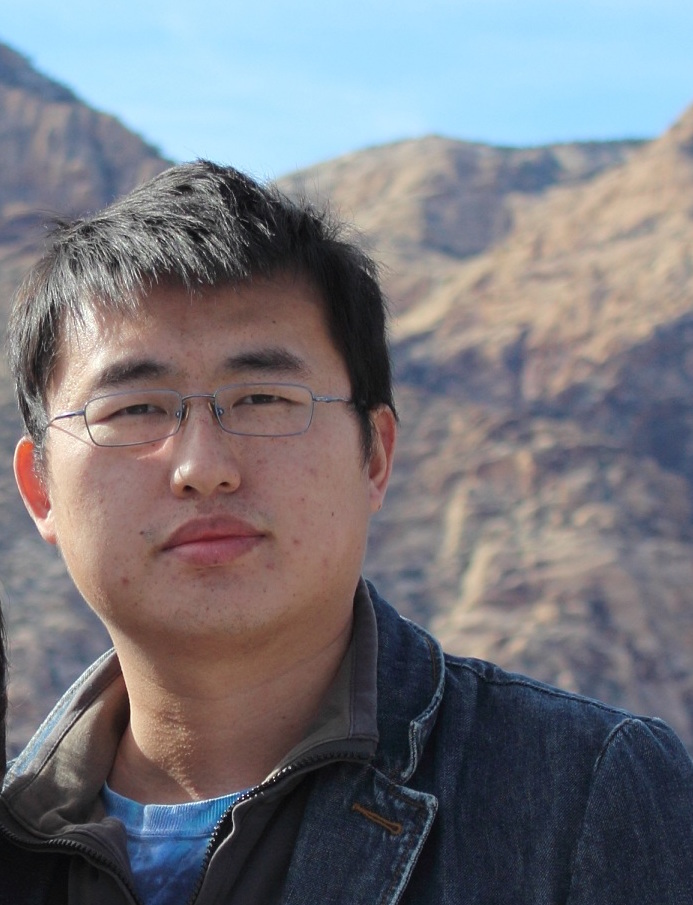
Research Areas
non-coding RNA; Epigenetics; Developmental Biology; Reproductive Biology
Education
2016-present: Professor, Institute of Biophysics, Chinese Academy of Sciences
2010-2016: Postdoc, Gregory Hannon Lab, Cold Spring Harbor Laboratory, US
2007-2010:Postdoc, Timothy Nilsen Lab, Case Western Reserve University, US
2002-2007: PhD, Timothy Nilsen Lab, Case Western Reserve University, US
1998-2002: B.S., Wuhan University, China
Publications
Yu Y., Gu J., Jin Y., Luo Y., Preall J., Ma J., Czech B. and Hannon G.J. (2015) Panoramix enforces piRNA-dependent co-transcriptional silencing. Science, 350 (6258): 339-342.
Vagin, V.*,Yu Y.*, Jankowska A.*, Luo Y., Malone C.D., Harrison E., Rosebrock A., Wakimoto B.T., Fagegaltier D., Muerdter F. and Hannon G.J.. (2013) Minotaur is critical for primary piRNA biogenesis. RNA, 19(8): 1064-77. (* equal contribution).
Muerdter F., Guzzardo P.M., Gillis J., Luo Y., Yu Y., Chen C., Fekete R. and Hannon G.J.. (2013) A genome-wide RNAi screen draws a genetic framework for transposon control and primary piRNA biogenesis in Drosophila. Mol Cell, 50(5): 736-748.
Yu Y., Maroney P.A., Denker J.A., Zhang X.H., Dybkov O., Luhrmann R., Jankowsky E., Chasin L.A. and Nilsen T.W. (2008). Dynamic regulation of alternative splicing by silencers that modulate 5' splice site competition. Cell, 135(7): 1224-36.
Maroney P.A., Yu Y., Fisher J. and Nilsen T.W. (2006). Evidence that microRNAs are associated with translating messenger RNAs in human cells. Nat Struct Mol Biol. 13(12):1102-7.
Maroney P.A., Yu Y. and Nilsen T.W. (2006). MicroRNAs, mRNAs, and translation. Cold Spring Harbor Symposium Quantitative Biol. 71:531-5.
Book Chapters
Yu Y. and Nilsen T.W. (2009). Mechanisms by which microRNAs regulate gene expression in animal cells. In Regulation of Gene Expression by Small RNAs. Gaur R.K. and Rossi J.J. Eds. CRC Press.
Research Interests
Students
现指导学生
苗娜 硕士研究生 071009-细胞生物学
刘俊良 硕士研究生 071009-细胞生物学
孟妍 硕士研究生 071009-细胞生物学
卢晓华 博士研究生 071010-生物化学与分子生物学
Honors & Distinctions
Travel Award from Mobile Genetic Elements, Woods hole, MA, September 2015.
Best Poster Award at CSH-Asia Conference: RNA Biology. Suzhou, China, October, 2012.
American Heart Association Postdoctoral Fellowship Award. July 2009 to June 2011.
Travel Award for Eukaryotic mRNA Processing meeting at Cold Spring Harbor. August, 2009.
The Young Scientist Program Fellowship, 21st IUBMB and 12th FAOBMB International Congress of Biochemistry and Molecular Biology: “Biomolecules for Quality of Life”, Shanghai, China. July, 2009.
Keystone Symposia Scholarship, Keystone Meeting on The Biology of RNA Silencing at Victoria, British Columbia, Canada. April, 2009.
